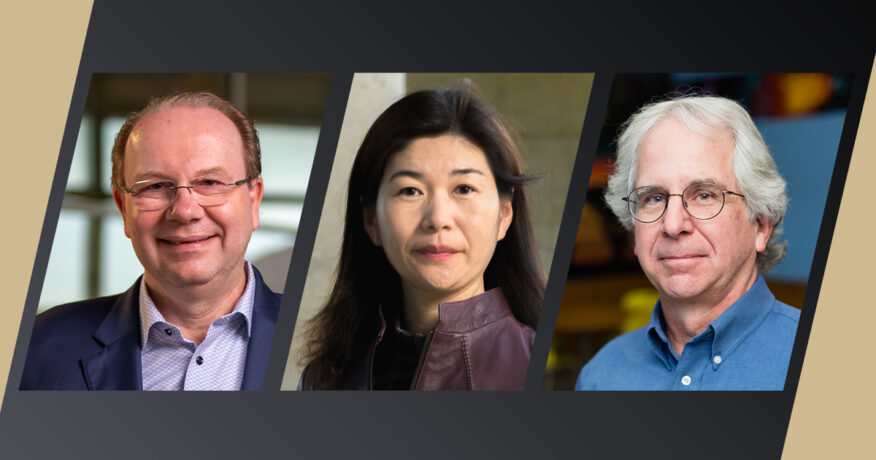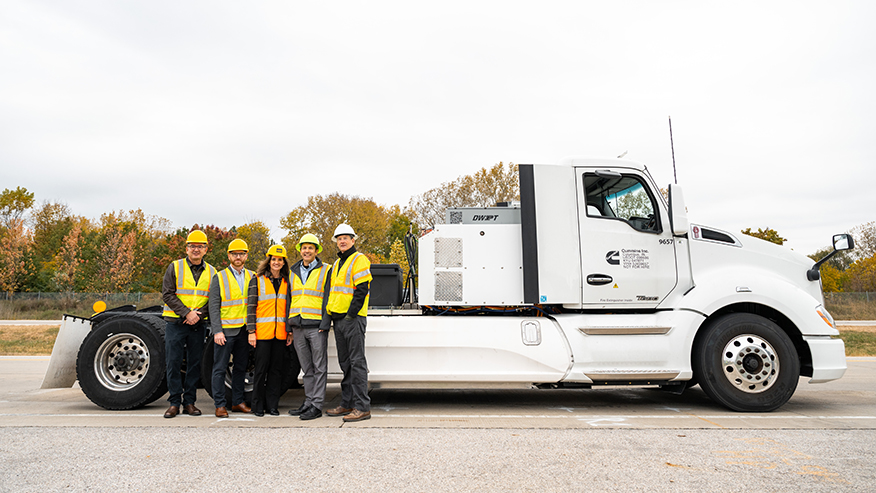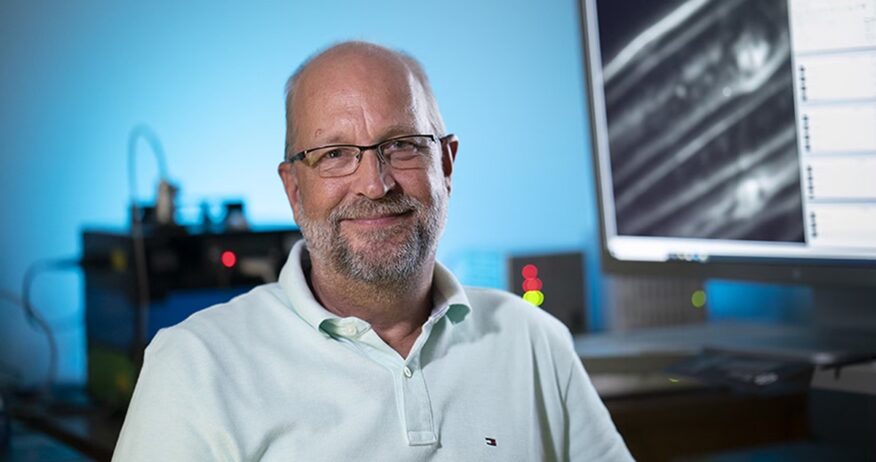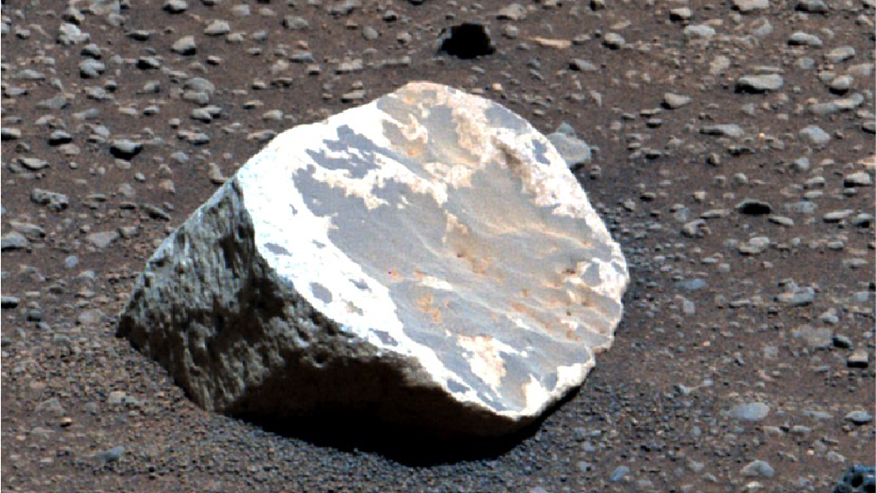Securing a strong future for microchips: Semiconductors at Purdue
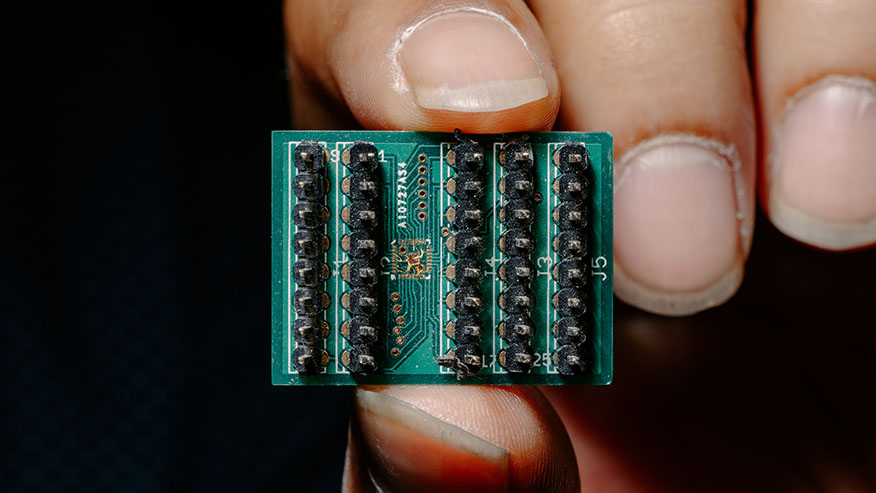
Shreyas Sen and his students specialize in designing chips inspired by the human body. This patented integrated circuit was among the first they designed at their Purdue University lab. (Purdue University photo/Kelsey Lefever)
SECURING A STRONG FUTURE FOR MICROCHIPS
WEST LAFAYETTE, Ind. — Scaling up excellence in the semiconductor and microelectronics industry is a key commitment at Purdue University.
A recent success is a project to advance AI hardware: CHEETA, which is funded through the Department of Defense Microelectronics Commons program in collaboration with the Silicon Crossroads Microelectronics Commons Hub.
This roundup comes ahead of Purdue’s third Semiconductor Week, taking place Oct. 28-Nov. 2. The slate of events calls together industry leaders and allows students to engage with professional industry organizations.
Here are more of the latest outcomes in research, workforce development and industry partnerships from Purdue.
RESEARCH BESTS: Applying, enhancing and securing chips for the future
Inspired by the human body, engineer designs chips that could make wearable AI more energy efficient
Purdue engineers are considering how the human body’s nervous system can inform the future of chip design to maximize energy use, which could expand the applications of wearable devices.
Right now, chips in wearable devices can’t access the power of AI without steady internet access because of the energy required. Shreyas Sen and his team are custom-designing chips for a network of wearable devices that can work with “edge devices” to solve more complex problems with AI while using less power — similarly to how a human’s nerves and brain work together.
One potential application: Someone with a heart condition could wear an electrocardiogram that uses AI to more accurately detect irregularities in the heart, even with a bad internet connection.
See also:
- Traction in defense and commercial sectors earns Ixana follow-on investment from Purdue Innovates Ventures
- Purdue researcher: ‘Body internet’ invention could revolutionize tech devices
Keeping today’s hottest electronics cool for users at nanoscale level
Semiconductor-driven machines can only operate as well as we can keep the entire system functioning — including keeping the machine from overheating. Mechanical engineer Amy Marconnet is investigating which tiny materials are best suited to keep tiny microchips from transferring heat in the wrong directions (say, onto your skin) without adding undue weight and cost.
For example, phase changing materials are one option under investigation.
“So you can have the materials be melting while you’re, say, using your VR (virtual reality) goggles,” Marconnet said. “And then when you’re recharging your goggles or overnight, they will solidify, and you can use the device with higher intensity the next day.”
Watch: New technology keeps phones and cars cool
RAPTOR technology secures semiconductors against counterfeit chips
RAPTOR, a patent-pending optical counterfeit detection method, uses deep learning to combat counterfeit chips — a problem that soared during recent chip shortages — while improving on scalability, natural degradation and tampering issues faced by existing anti-counterfeit tactics. Clever girl!
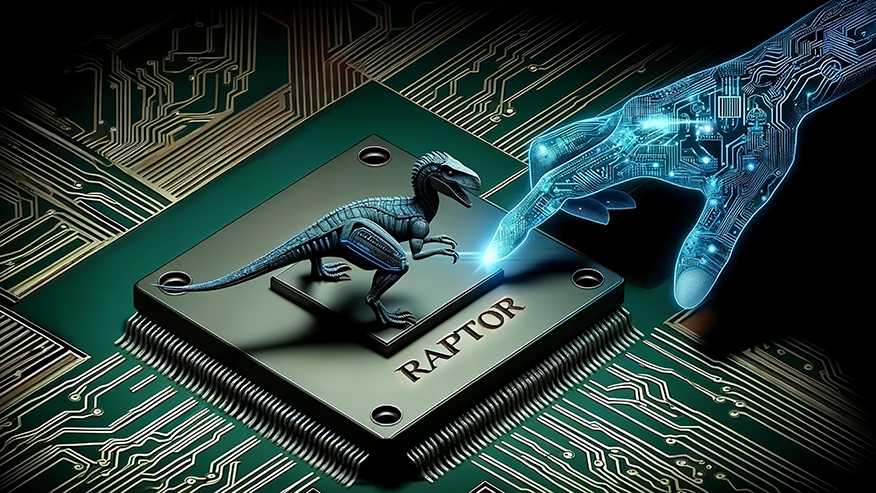
“The global chip industry is grappling with dual challenges: a profound shortage of new chips and a surge of counterfeit chips valued at $75 billion, introducing substantial risks of malfunction and unwanted surveillance,” Kildishev told Hackster.
In the news:
- RAPTOR turns a beady eye onto counterfeit or maliciously modified chips (Hackster)
- How AI could help with counterfeit chip detection (Electronics 360)
SEMICONDUCTORS AND SOCIETY
Inside a semiconductor boot camp with NBC News NOW
Gadi Schwartz, host of NBC’s Stay Tuned NOW, talks the state of semiconductors, beginning with a visit to Purdue’s hands-on “semiconductor boot camp.” In the Summer Training, Awareness, and Readiness for Semiconductors (STARS) program, underclassmen are exposed to the design, manufacture and packaging of microchips.
Related:
Reinventing the land-grant university to grow jobs, companies, talent and global competitiveness (Elsevier)
In this post, Purdue President Mung Chiang outlines the responsibilities of modern land-grant universities and how they are positioned to address society’s most pressing problems — now and in the future.
With the accelerated development of the technology and semiconductor industries, demand for both products and services, as well as the highly skilled workforce to support them, is evolving faster than ever.
“We believe it’s key to our mission to serve as an economic growth engine, co-generating what we call the three elements that advance an academic culture that has direct impacts on society: workforce talent, jobs and careers, and knowledge together.”
In the news:
- The Indiana-Illinois Competitiveness conversation: Exploring the Midwest’s leadership in semiconductors, quantum science and advanced bioscience (Associated Press)
- A U.S. semiconductor industry in crisis needs a workforce that doesn’t yet exist (Computerworld)
Purdue’s Strategic Initiatives | Mung Chiang on LinkedIn | Purdue Computes
CAMPUS NEWS: Funding near and partnerships far
Since plans to build a $4 billion AI memory chip production facility in Purdue Research Park were announced this spring, Purdue leaders have been steadily bolstering the university’s relationships with international partners while research faculty have been earning the support of federal funding agencies. Here are some of the headlines from recent months:
- Purdue receives grant funding in all three areas of NSF semiconductor research program
- Purdue University and India strengthen 125-year relationship to drive partnership
- Partnerships with Malaysian universities focus on AI, data science
- Purdue, Argonne sign MOU to collaborate on chips, quantum and other key research areas
- Purdue, Panama enter agreement to support semiconductor academic collaboration and workforce development
- Purdue enters 3 agreements with European partners to accelerate research and education
- Purdue, Dominican Republic enter agreement to drive semiconductor growth
Purdue’s growing semiconductor innovation ecosystem is one of four key pillars of Purdue Computes, a comprehensive initiative that also includes positioning the Department of Computer Science as a top 10 national program, becoming a leader in the field of physical artificial intelligence, and advancing quantum science and engineering to create future technologies that enable unparalleled excellence at scale.
About Purdue University
Purdue University is a public research institution demonstrating excellence at scale. Ranked among top 10 public universities and with two colleges in the top four in the United States, Purdue discovers and disseminates knowledge with a quality and at a scale second to none. More than 105,000 students study at Purdue across modalities and locations, including nearly 50,000 in person on the West Lafayette campus. Committed to affordability and accessibility, Purdue’s main campus has frozen tuition 13 years in a row. See how Purdue never stops in the persistent pursuit of the next giant leap — including its first comprehensive urban campus in Indianapolis, the Mitch Daniels School of Business, Purdue Computes and the One Health initiative — at https://www.purdue.edu/president/strategic-initiatives.
Media contact: Christy McCarter, mccarter@purdue.edu, @ChristyMcCarter
